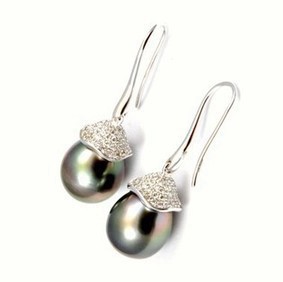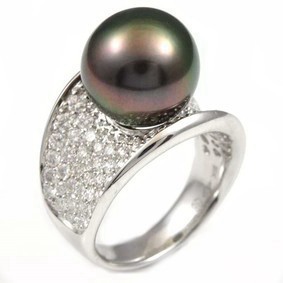THE PEARL. A LIVING GEM
Types of Pearls....
Natural Pearls
Natural pearls are formed when an irritant such as a grain of sand, the larva of a worm or a speck of coral accidentally lodges in an oyster's body. With no shell sphere as its nucleus, natural pearls are rarely round or uniform in size.
Cultured Pearls
Cultured pearls are formed when humans intentionally introduce an irritant into an oyster, such as a tiny piece of mother of pearl. The oyster then forms concentric layers of a substance called crystalline nacre around the irritant. The shape and size of the resulting pearls depends, to a large degree, on the shape and size of their implanted irritant. It will take between one and three years before the pearl will be harvested. Most of the pearls used in jewellery today are cultured pearls.
These are five main groups of Cultured Pearls:
Akoya pearls
White and Black South Sea pearls
Freshwater pearls
Mabe pearls
Keshi
Simulated Pearls
Simulated or imitation pearls are commonly manufactured from beads of glass, plastic, or polished shells, and have a surface created by a manufacturing process. They are coated with a varnish that was traditionally made from ground-up fish scales, but is more recently made from reconstructed mother of pearl.

CULTURED PEARLS
Akoya
One of the most familiar type of cultured pearls, they are grown in pearl oysters off the coast of Japan. Akoya pearls are known for their lovely orient and warm colour. They rarely grow more than 9mm in size.
Mabe
Large hemispherical cultured pearls grown against the inside shells of oysters instead of within the body. Less expensive than regular round cultured pearls and, because of their hemispherical shape, they are usually mounted in jewellery such as earrings, rings and brooches.
Fresh Water
Pearls cultivated in molluscs, not oysters, and found in fresh water lakes and rivers. Fresh water pearls generally are elongated in shape and have a milky translucent appearance. Their wide range of interesting shapes and colours make up in fashion appeal for their relatively low value. In China, shape and lustre are rapidly improving and round freshwater pearls are readily available.
Keshi
Seedless pearls which form naturally in many cultured pearl oysters in both Akoya and South Sea pearls. They also come in a variety of colours, shapes and sizes.
South Seas Pearls
Australian - Large cultured pearls (10mm and larger) grown in large oysters (called Pinctada Maxima) in warm waters off the Australian coast. These pearls are found in a variety of colours including white, silver, gold and rose. Australian South Sea pearls are generally rare and valuable.
Indonesian - Large cultured pearls (10mm and larger) which are grown in large oysters (Pinctada Margaritifera - black Iipped) off the islands of French Polynesia. Colours range from soft grey to black, with hues of reds, blues and greens.
